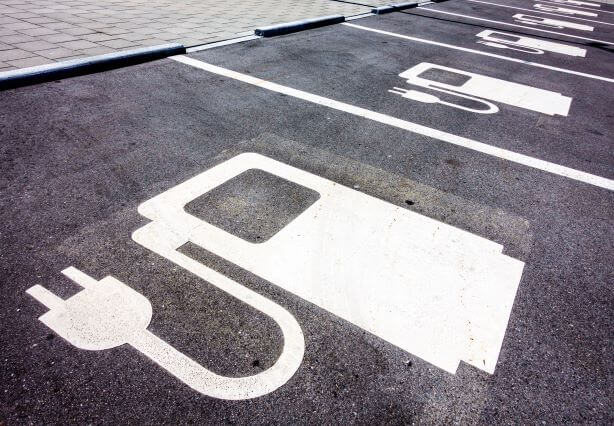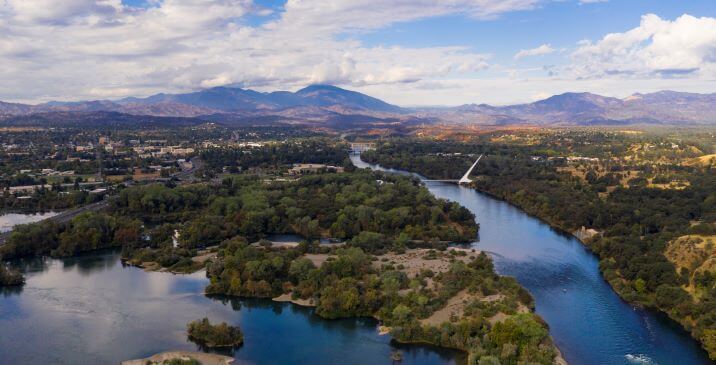Americans are Ready to Buy EVs, But are America’s Utilities Ready to Power Them?

February 8, 2022
Smart Charging Solutions
Updated September 9, 2022
By Aaron Lauinger
Right now, from Key West, Florida, to Utqiaġvik, Alaska and everywhere in between, there are approximately 280 million cars and trucks cruising the roads and highways of the United States. By 2030, possibly 50% of these vehicles could be electric.
It’s no longer pie-in-the-sky thinking. Recent legislation including the Infrastructure Investment and Jobs Act (IIJA) and the Inflation Reduction Act (IRA) of 2022 both provide funds to enable EV adoption, and while the dollars are in the billions, there is still a very large gap between the funds provided by IIJA and those needed to make changes. EV adoption is about more than just the dollars; it also requires a change in behavior and approach from consumers, providers and stakeholders.
Lost among the hype for EVs, especially in the consumer media, one will find some difficult questions to answer, such as:
- Are America’s utilities prepared to power these electric vehicles as they transition from fossil fuels to renewable energy?
- While the Infrastructure Investment and Jobs Act will contribute $5 billion over the next 5 years, who’s going to pay the remaining estimated $10 billion price tag to build out a nationwide network of fast-charging EV stations? According to a MCKINSEYreport, 13 million charging stations will need to be installed by 2030 to support the growing tide of EVs on America’s roads.
- What will happen to the estimated 150,000 service stations (and the jobs they support) when people no longer need to buy gas and don’t want to wait even 10 minutes for their vehicles to charge?
- Will power companies allow consumers to sell back the stored energy in their car batteries when they’re not driving their vehicles to help utilities meet power demand as our nation grows in population and deals with the demand for more air conditioning as temperatures continue to rise?
While some of these challenges will be more difficult than others to solve, from a big picture perspective, our country is about to undergo a rapid change in the years ahead as we transition from fossil fuels to an all-electric, renewable energy future, and it will require everyone in our country to adapt. However, there is another huge mountain to climb: according to a REUTER’S REPORT, “the power and sectors combined make up more than 50% of the U.S. greenhouse gas emissions.” In that same report, the National Renewable Energy Laboratory (NREL) estimates that by 2050, “the electrification of transportation and other sectors will require a doubling of U.S. generation capacity.”
This means that engineers working within the power and transportation industries will need to adjust their thinking in anticipation of the changes coming in the years ahead. Among these changes, I foresee the following:
Lulled by capacity – The American power grid today has the capacity now to power the growth expected in EVs and electrification infrastructure over the next several years. That’s largely thanks to energy-efficient appliances and the adoption of better building practices that reduce heating and cooling costs. However, the volume of EVs and the timing of when we’ll charge them offers the real challenge. A recent study by the BOSTON CONSULTING GROUP estimates that $200 billion in investments will be needed to build out the infrastructure to support 40 million EVs in the 2030s. Imagine the costs of 250 million EVs to replace all vehicles currently on our roads today.
Watch changing migration patterns – As global warming increases, people will move to avoid wildfires, or toward places that are not plagued by drought. We are already seeing how migration is affecting places such as the Seattle area or Texas. Many people moved because of COVID-19, and now one would find that places like Duluth, Minnesota, are being touted as climate havens. Transportation and utility planners will need to monitor these changes – because where the people go, the EVs will go.
Educating the public about paying for their highways – Currently federal and state gas taxes fund the maintenance of our nation’s highways. Most folks don’t even notice this charge when they fill up their cars or trucks. As gas-powered vehicles become more fuel efficient over the next 15 years and as more EVs hit the roads, somehow these funds will need to be replaced. If the majority of Americans charge their EVs at home, will utilities need to add a charging tax to help fund road and bridge maintenance? Or does the Highway Trust Fund move from a gasoline tax to a Vehicle Miles Traveled tax?
Smart charging to balance peak and off-peak demand – As EV cars, trucks and other vehicles join the grid, I foresee a new system where utilities charge consumers and businesses less when they charge their EVs during off-peak times. Imagine millions of Americans arriving home from their evening rush hour and immediately plugging in their vehicles. What if we can convince these masses to wait to charge their vehicle even for just a couple hours?
Battery storage will be a critical component – As we transition from fossil fuels to renewable energy, battery storage will play a critical role in meeting the demand of EVs. It will also play an important part in the northern half of the U.S. for the change in use of natural gas and fuel-oil heating to electric heating. I see utility-scale battery storage systems powering cities, suburbs and towns, and I anticipate homes and buildings having their own battery storage systems.
Transforming Mass Transit with EVs – The problem with light-rail transit systems that are being built in many cities across the country is that they take up a lot of space and are fixed to a specific route. In the decades ahead, that may all change. 5G digital communications allow for automated electric vans and shuttles to be linked together – kind of like small trains that can travel through nearly any neighborhood and follow routes based on where people actually are, versus pushing people to travel to light-rail train stations.
Building Equity into Future EV Infrastructure – EV cars and trucks are not cheap. Because of their price tag, EVs and their cost could prevent people in lower income brackets from purchasing the technology as EVs go mainstream. It’s also not likely that there will be a robust used EV market for some time, which would provide a gateway for lower-income households to adapt EVs into their day-to-day lives. As our country makes the shift to EVs, logically, we would build charging stations where the EVs are. But by that logic, we are likely to leave out low-income urban neighborhoods and large swaths of rural America, unintentionally reinforcing racial disparities that already exist in our system and inadvertently widening the gap between urban and rural America. Utilities, renewable developers and transportation departments need to address this issue as America builds out its EV infrastructure.
Bottom Line: Don’t Expect a Slow Transition
I think it’s fair to say that, from a distance, the emergence of electric vehicles has been one of gradual change. After all, Tesla introduced its first all-electric vehicle to the public back in 2008 and since then, there are only 1.3 million electric cars on our roads today.
However, the announcement by Ford Motor Company about its intention to build three new EV factories, employing more than 10,000 workers in Kentucky and Tennessee, by 2025 should give pause to anyone in the utility industry. I think it’s also fair to say that the momentum for EVs is rising as manufacturers build better and more reliable EVs to meet the same levels of performance as gas vehicles. It’s at that point that consumers, auto manufacturers and the government can start pointing at utilities to move faster and build the infrastructure needed to charge those vehicles.
The gap between Americans who feel that something must be done to slow climate change and the number of Americans who are willing to act, such as getting rid of their gas-powered vehicle in favor of an electric vehicle, is narrowing.
The goal of reducing carbon emissions may not be reached by transitioning our power plants from coal and natural gas to renewables, but it may be fueled by the average American feeling they can make a different choice in what they drive.
 By Aaron Lauinger, Market Director, Transportation and Water
By Aaron Lauinger, Market Director, Transportation and Water
Aaron Lauinger is Market Director for two of Ulteig’s LIFELINE SECTORS – TRANSPORTATION and WATER. Lauinger joined Ulteig 15 years ago and is the host of the ULTEIG ENERGY AND INFRASTRUCTURE PODCAST.
WHAT MAKES ULTEIG DIFFERENT?
From global energy producers to locally funded cities and private developers to government agencies, the clients we serve encompass a broad range of relationships and projects. Find out why Ulteig is a leader in the engineering industry.
Contact Us


